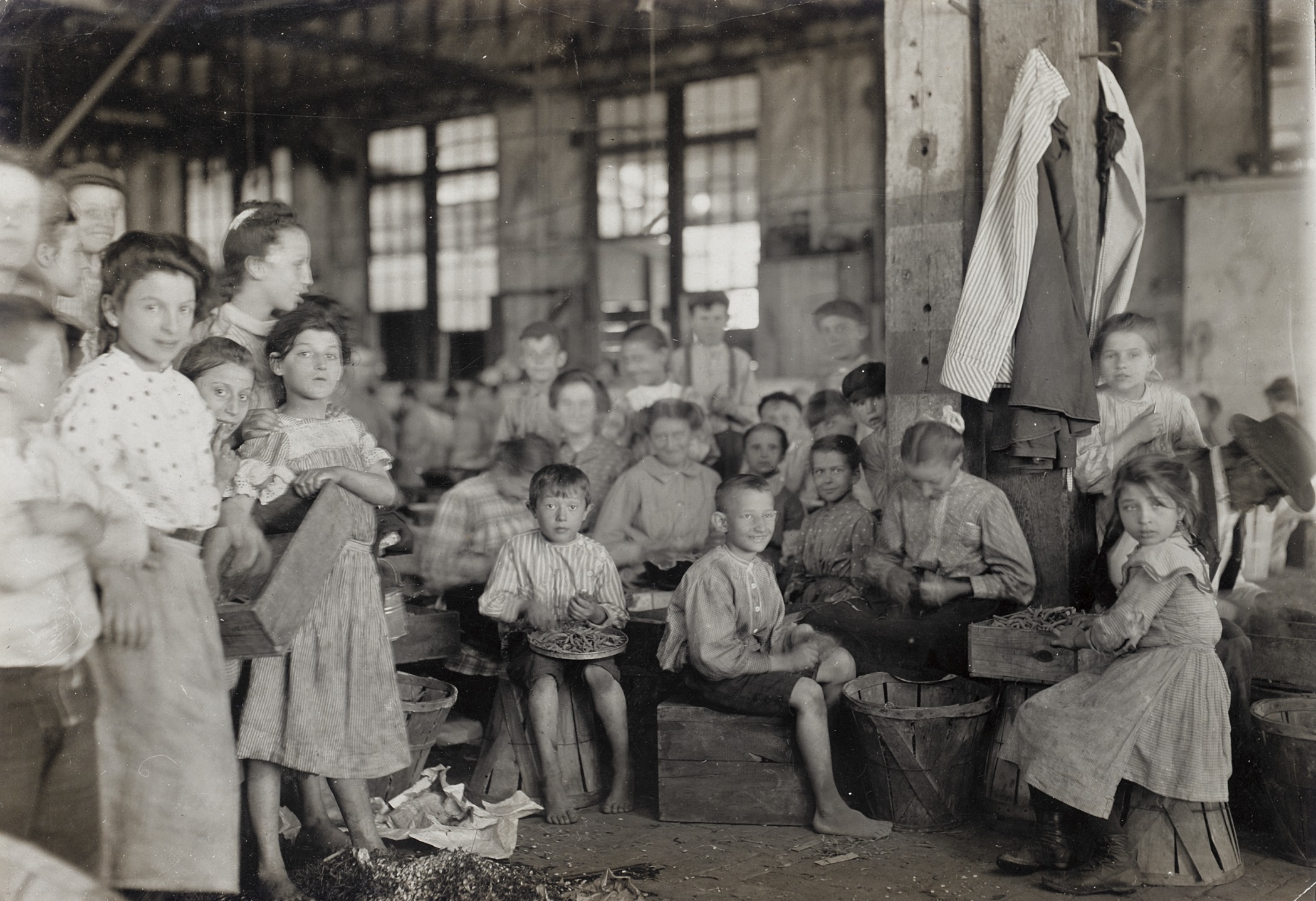
“Baltimore, Maryland, 1909” by Lewis Wickes Hines (U.S., 1874-1940), 1909. Currently held by Los Angeles County Museum of Art (LACMA). This photograph pictures child laborers at work in Baltimore, Maryland in the early 20th century.
Barefoot children sitting on crates or standing in the dirt. Young boys and girls together, some smiling, some not even looking at the camera. In this written description, different images might come to mind. Some people might picture a group of kids playing a game in the backyard during the summer break from school. The photograph above tells a very different story, yet still fits the description.
Following the Industrial Revolution, factories began popping up in cities throughout the United States and Europe. These factories required laborers, and factory owners did not want to pay much for the hard work they required. Child labor was inexpensive and readily available, as many families needed the additional income that came from pulling children out of school and putting them to work. Girls were often found working in textile mills; making clothing had traditionally been a female role in the home, which then transferred to factory work once textile production became mechanized. Young girls were especially useful in the factories because their small fingers allowed them to change spools of thread and work with delicate machinery more nimbly.
This photograph from the Los Angeles County Museum of Art shows boys and girls gathered together for a posed portrait. Some children bravely smile and others look nervous or frightened while they continue their work. Many of the workers are girls who appear to be between the ages of 7 and 12. The girls are wearing dirty dresses and have unkempt hair and all but one are barefoot. They likely worked long hours in unhealthy conditions for very little pay and no opportunity to attend school. This scene was all too common at the turn of the century, which is why photographer Lewis Wickes Hines took the picture.
Hines took photos of child laborers for the National Child Labor Committee, where he worked for 12 years to inspire social reform. Photography played an important role in the reform movements of this era because portraits put a face to poverty and exposed the terrible working and living conditions to the public. This was not successful overnight, however. Child labor was still legal in many parts of the United States for 29 years after this photograph was shot. A national child labor law was passed in 1938 – by that time thousands of young girls had spent their formative years toiling in factories, likely hoping that things would be different for their own daughters.
-Hillary Rose
Education Advisor
Girl Museum Inc.
This post is part of our 52 Objects in the History of Girlhood exhibition. Each week during 2017, we explore a historical object and its relation to girls’ history. Stay tuned to discover the incredible history of girls, and be sure to visit the complete exhibition to discover the integral role girls have played since the dawn of time.
